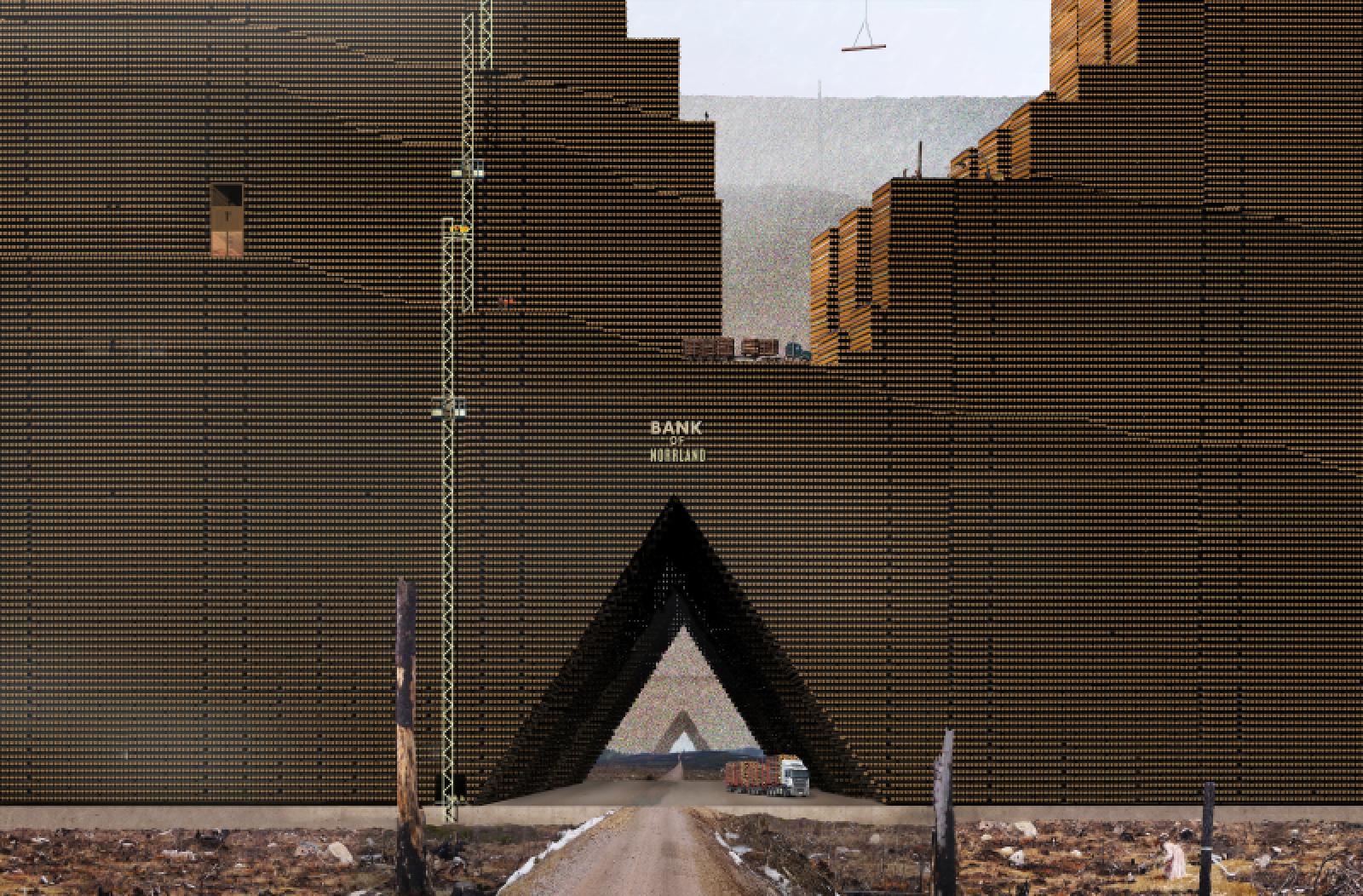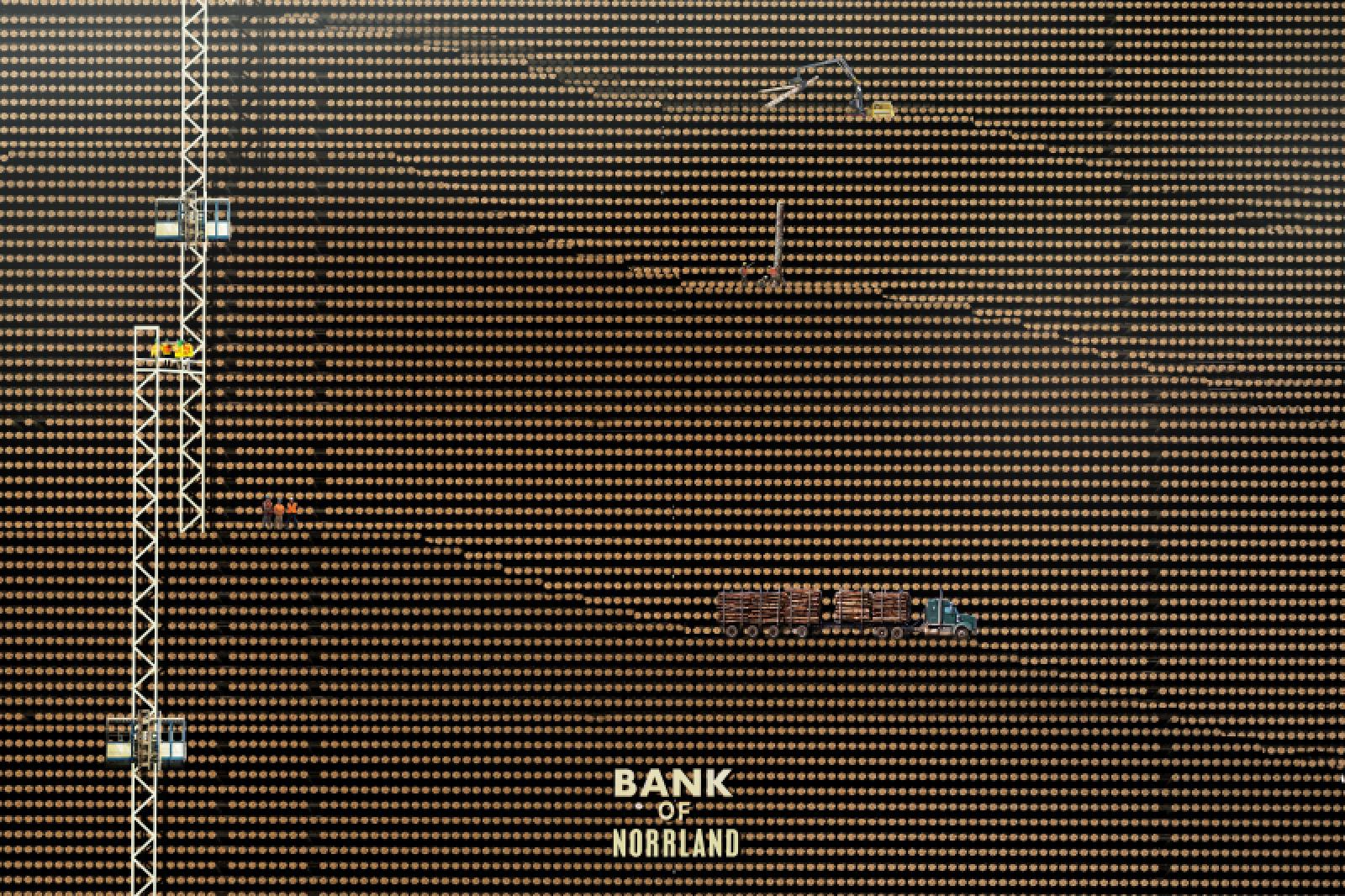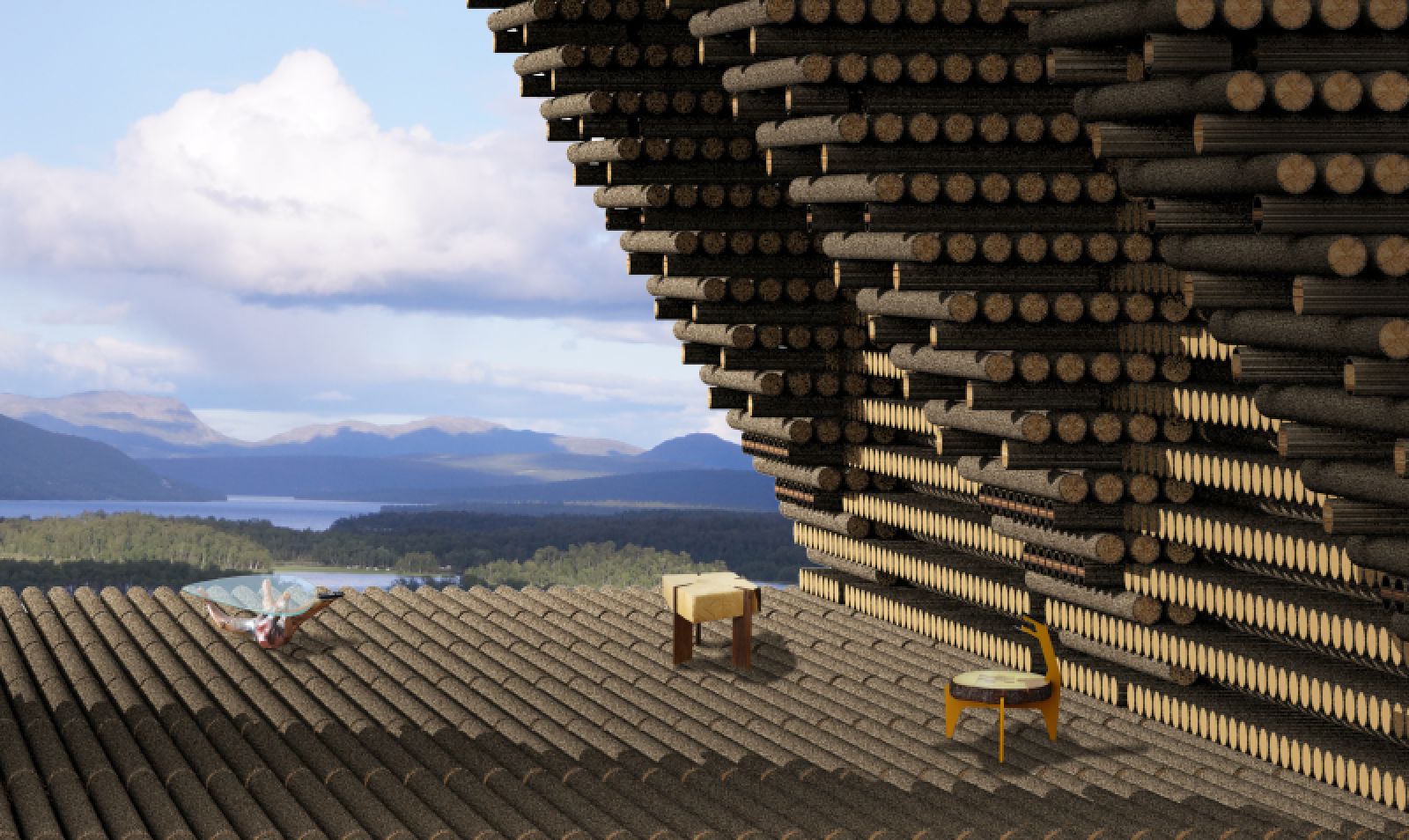In order to reduce the “green” half of Sweden’s carbon emissions—those that come from the country’s forest industries—Anders Berensson Architects proposes the world’s largest timber structure: the Bank of Norrland. The purpose of the Bank is to store carbon dioxide; in the process, it will provide farmers with decent payment for their wood and ensuring continuity for the Swedish building and manufacturing industries in a stormy and unpredictable world, and in times of reduced wood consumption.
The bank is designed to be able to store a year’s worth of timber production; the cubic kilometer of stored logs will together form the world’s largest timber structure and the largest man-made carbon dioxide storage built to date. Through the Bank, timber will be stored for future use rather than being immediately burnt for paper or fuel as it is today, a practice that releases large amounts of carbon dioxide into the atmosphere.
The Bank of Norrland is a science fiction story. Its scientific component summarizes facts about Sweden’s forest industry today, whilst as fiction it suggests a new, radical forest industry that generates a new, radical architecture. The Bank of Norrland has been produced for the exhibition “Architectures of Transition” at Bildmuseet in Umeå, which is open to visitors until March 2022.
Fiction
Before them was the Bank of Norrland, a structure as mighty as the sum of all storms and trees in Sweden! The Bank had been founded after a series of great storms and pest invasions had swept Sweden—these events, in combination with international criticism of the “Swedish calculation” that had purportedly allowed the country to hide 50% of its deforestation-related carbon emissions, had led the price of timber to plummet.
Facts
Over hundreds of years, the forest stores carbon that it extracts from the air through photosynthesis. This is why a forest is a carbon sink. A large proportion of the carbon is stored in the soil. A former forest will therefore continue to slowly release greenhouse gases into the air for around fifteen years after it has been logged. The rest of the carbon is stored in the trunks. Since wood is very durable, carbon can be stored in wood for potentially hundreds of years.
The majority of logged wood is used to make pulp, disposable paper products, and biofuel. Biofuel accounts for 33% of Sweden’s total national carbon emissions. Paper can be recycled up to seven times. Paper waste is then burned in heating plants, emitting further greenhouse gases into the atmosphere. One of the byproducts of pulp production is ”black liquor,” which is usually burned. This process accounts for roughly 15% of Sweden’s national carbon emissions. All emissions that result from burning wood are classified as “renewable.”
For this reason, forestry is considered a crucial part of Sweden’s climate strategy. Critics argue that because forests take a long time (60-120 years) to regrow, we would be better off conserving forests and restoring ecosystems. Climate change has already had an impact. More trees are being felled during storms due to a lack of ground frost and forest fires are hitting harder because of dryer seasons. Under the Paris Agreement, Sweden has committed to drastically lowering carbon emissions to 55% of 1990 levels by 2030. By 2050, the goal is a decrease of 95% of 1990 levels.
These commitments will change how forests are managed in the future, placing greater focus on preservation and on the nature of wood as a durable and valuable resource. The way that wood is utilized will inevitably change, with only as much as is needed being used in order to manufacture products that will last longer, like those made in the construction sector or through carpentry. Diverse ecosystems tend to be more resilient with respect to the effects of climate change, including forest fires, parasites, water shortages, and storms. Source and images Courtesy of Anders Berensson Architects.










